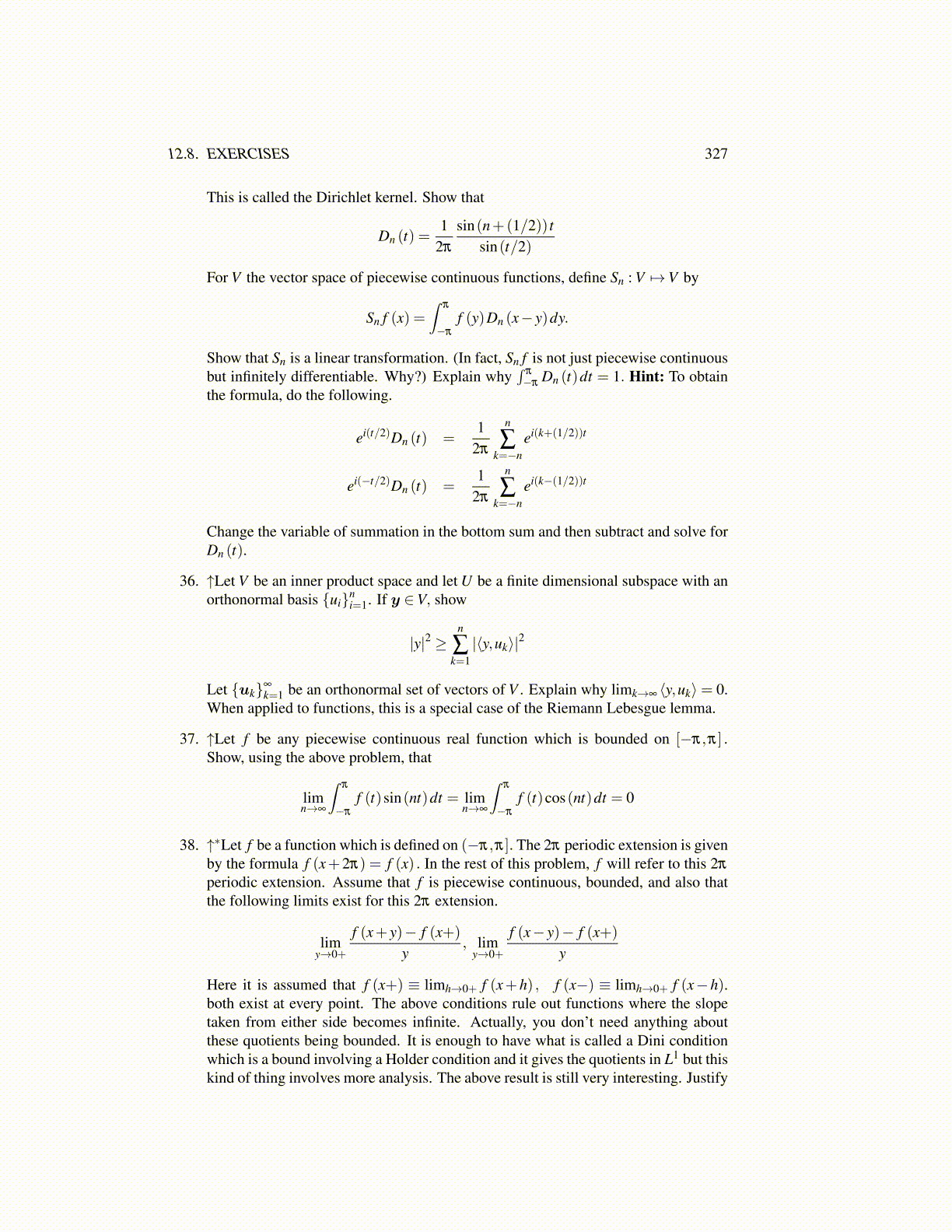
12.8. EXERCISES 327
This is called the Dirichlet kernel. Show that
Dn (t) =1
2π
sin(n+(1/2)) tsin(t/2)
For V the vector space of piecewise continuous functions, define Sn : V 7→V by
Sn f (x) =∫
π
−π
f (y)Dn (x− y)dy.
Show that Sn is a linear transformation. (In fact, Sn f is not just piecewise continuousbut infinitely differentiable. Why?) Explain why
∫π
−πDn (t)dt = 1. Hint: To obtain
the formula, do the following.
ei(t/2)Dn (t) =1
2π
n
∑k=−n
ei(k+(1/2))t
ei(−t/2)Dn (t) =1
2π
n
∑k=−n
ei(k−(1/2))t
Change the variable of summation in the bottom sum and then subtract and solve forDn (t).
36. ↑Let V be an inner product space and let U be a finite dimensional subspace with anorthonormal basis {ui}n
i=1. If y ∈V, show
|y|2 ≥n
∑k=1|⟨y,uk⟩|2
Let {uk}∞
k=1 be an orthonormal set of vectors of V . Explain why limk→∞ ⟨y,uk⟩= 0.When applied to functions, this is a special case of the Riemann Lebesgue lemma.
37. ↑Let f be any piecewise continuous real function which is bounded on [−π,π] .Show, using the above problem, that
limn→∞
∫π
−π
f (t)sin(nt)dt = limn→∞
∫π
−π
f (t)cos(nt)dt = 0
38. ↑∗Let f be a function which is defined on (−π,π]. The 2π periodic extension is givenby the formula f (x+2π) = f (x) . In the rest of this problem, f will refer to this 2π
periodic extension. Assume that f is piecewise continuous, bounded, and also thatthe following limits exist for this 2π extension.
limy→0+
f (x+ y)− f (x+)
y, lim
y→0+
f (x− y)− f (x+)
y
Here it is assumed that f (x+) ≡ limh→0+ f (x+h) , f (x−) ≡ limh→0+ f (x−h).both exist at every point. The above conditions rule out functions where the slopetaken from either side becomes infinite. Actually, you don’t need anything aboutthese quotients being bounded. It is enough to have what is called a Dini conditionwhich is a bound involving a Holder condition and it gives the quotients in L1 but thiskind of thing involves more analysis. The above result is still very interesting. Justify